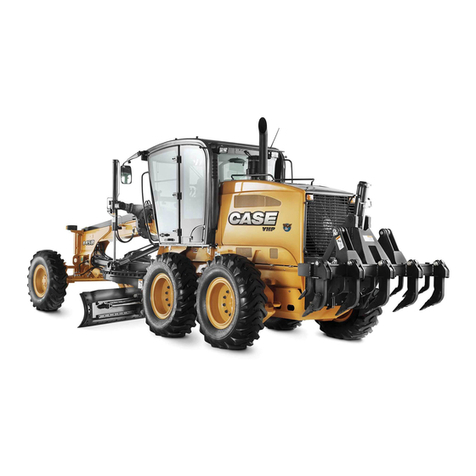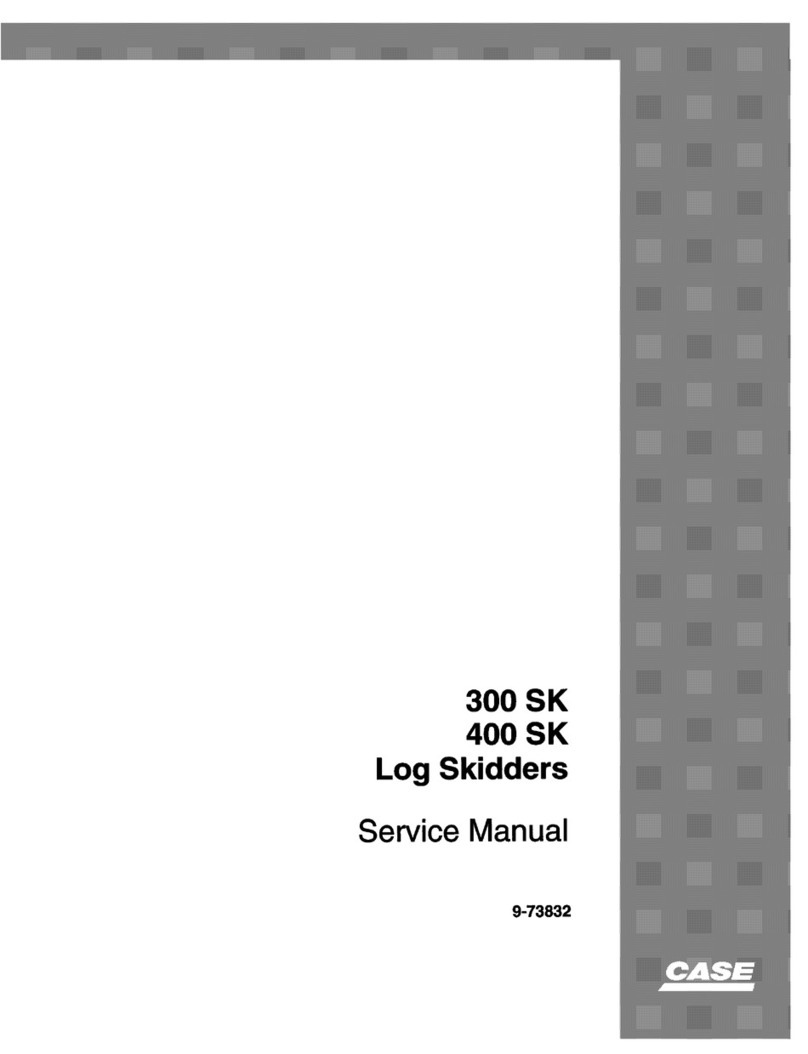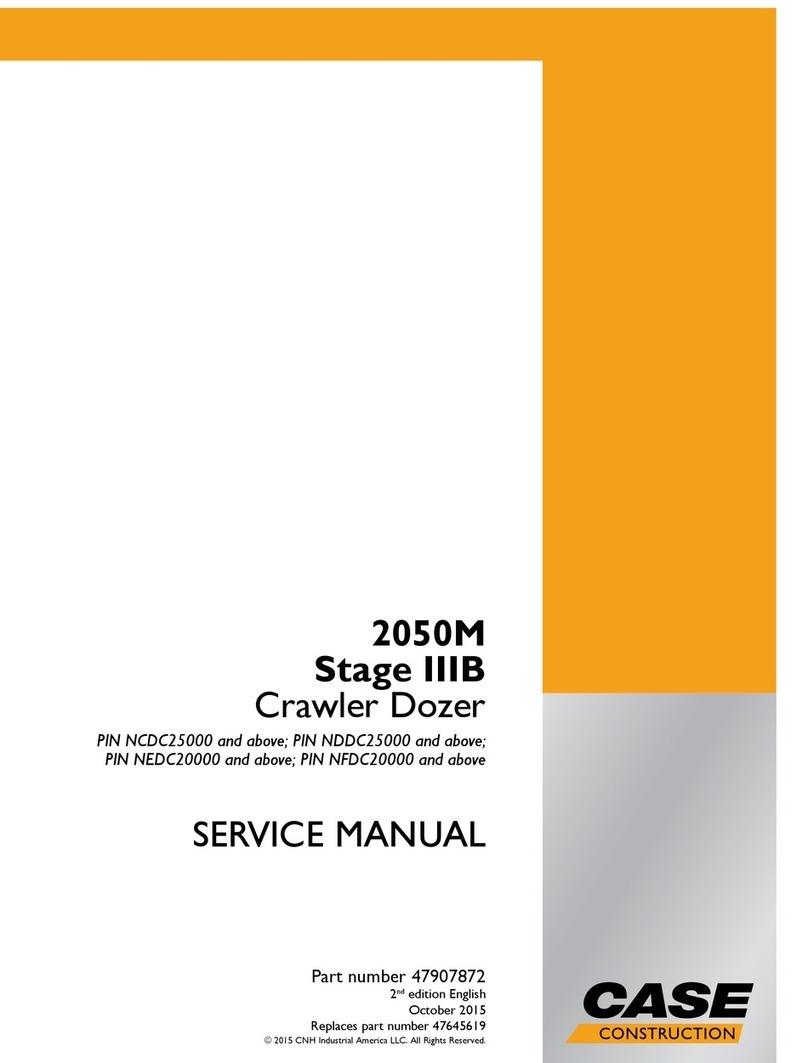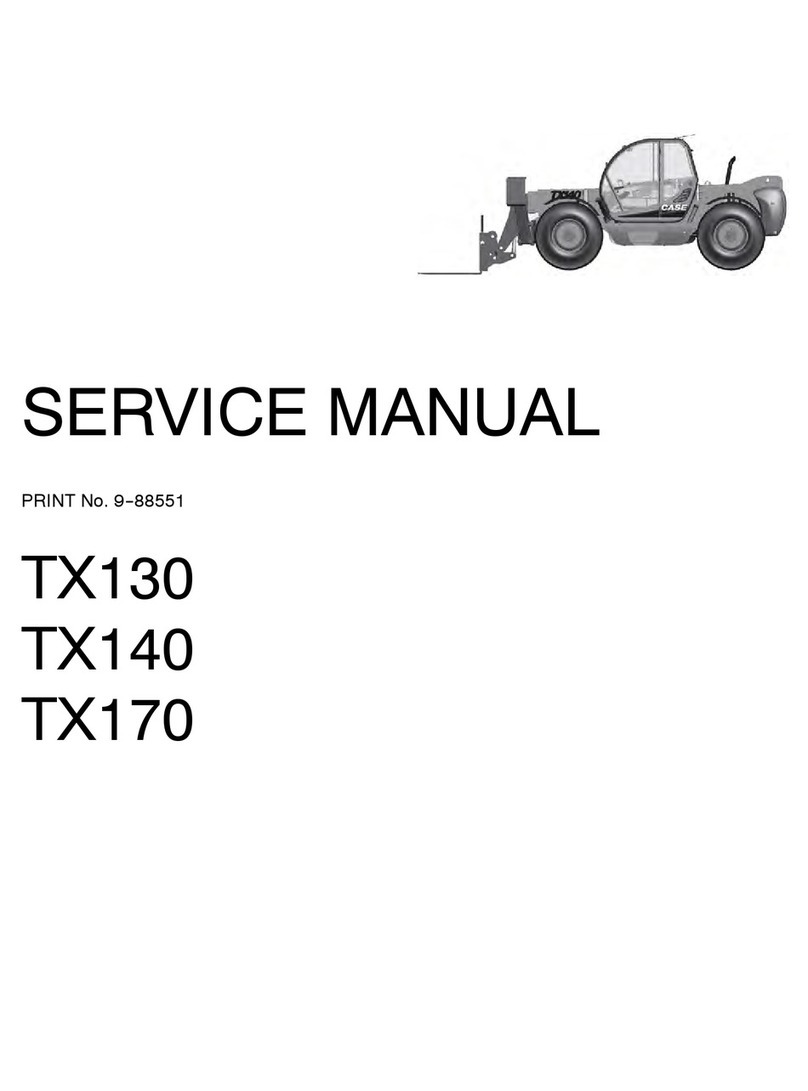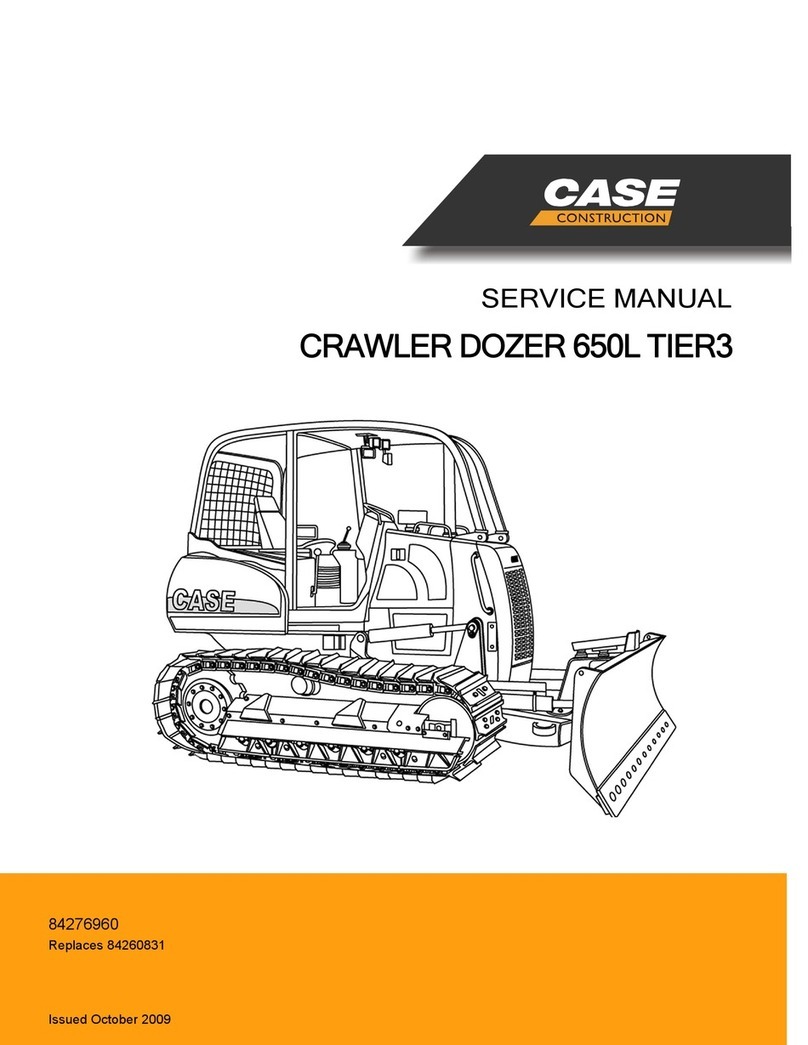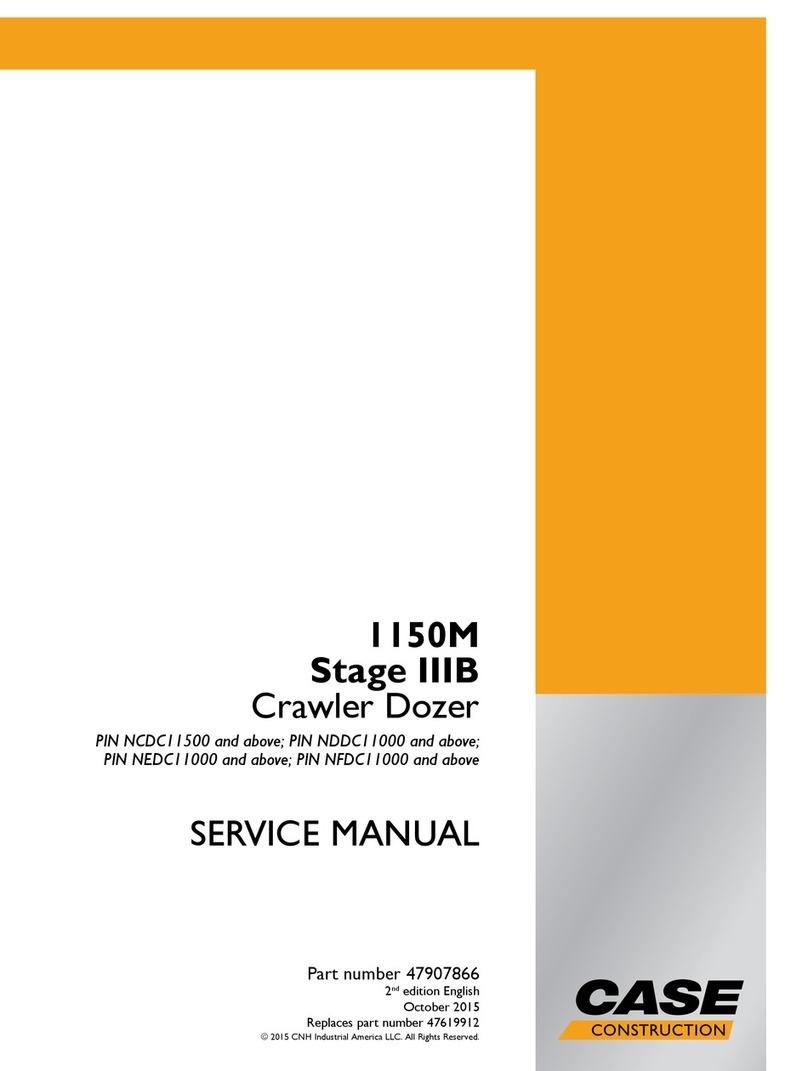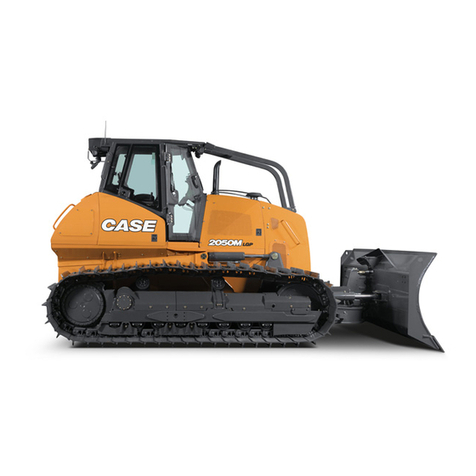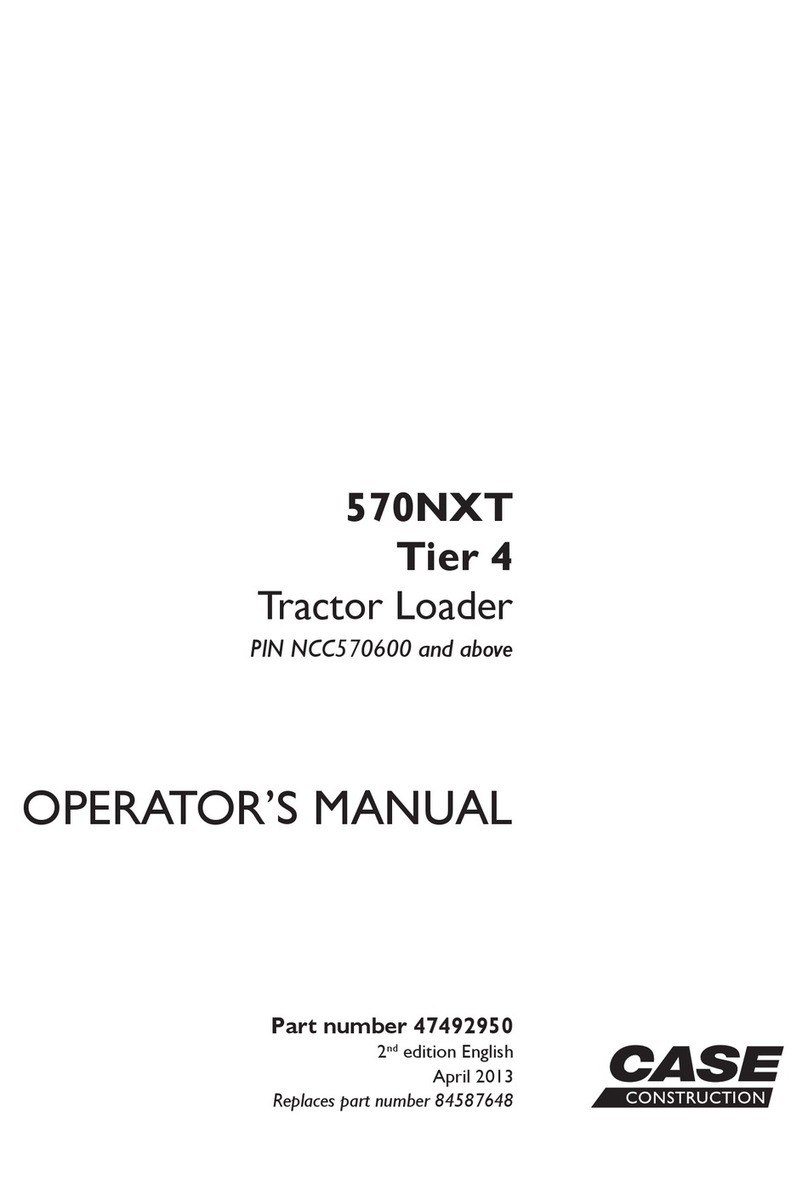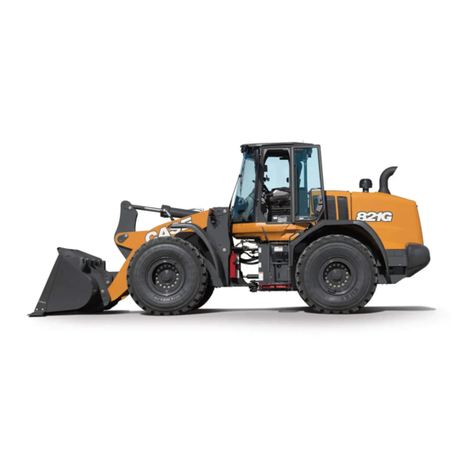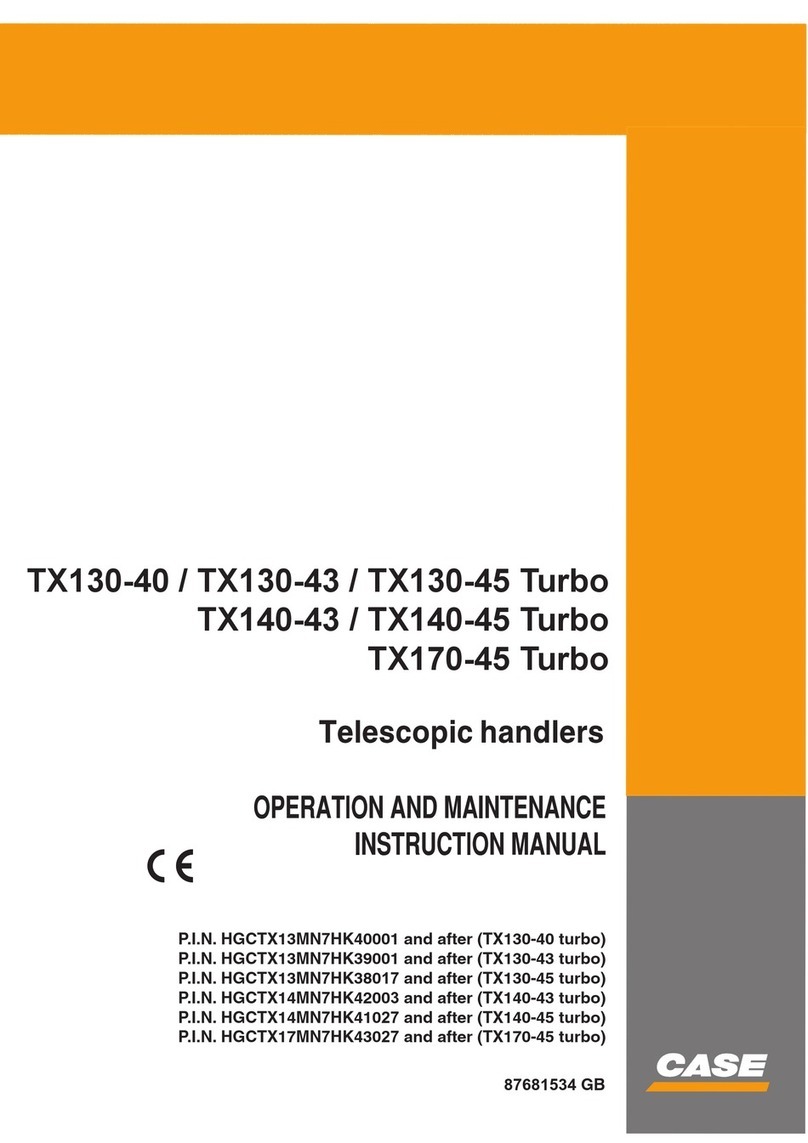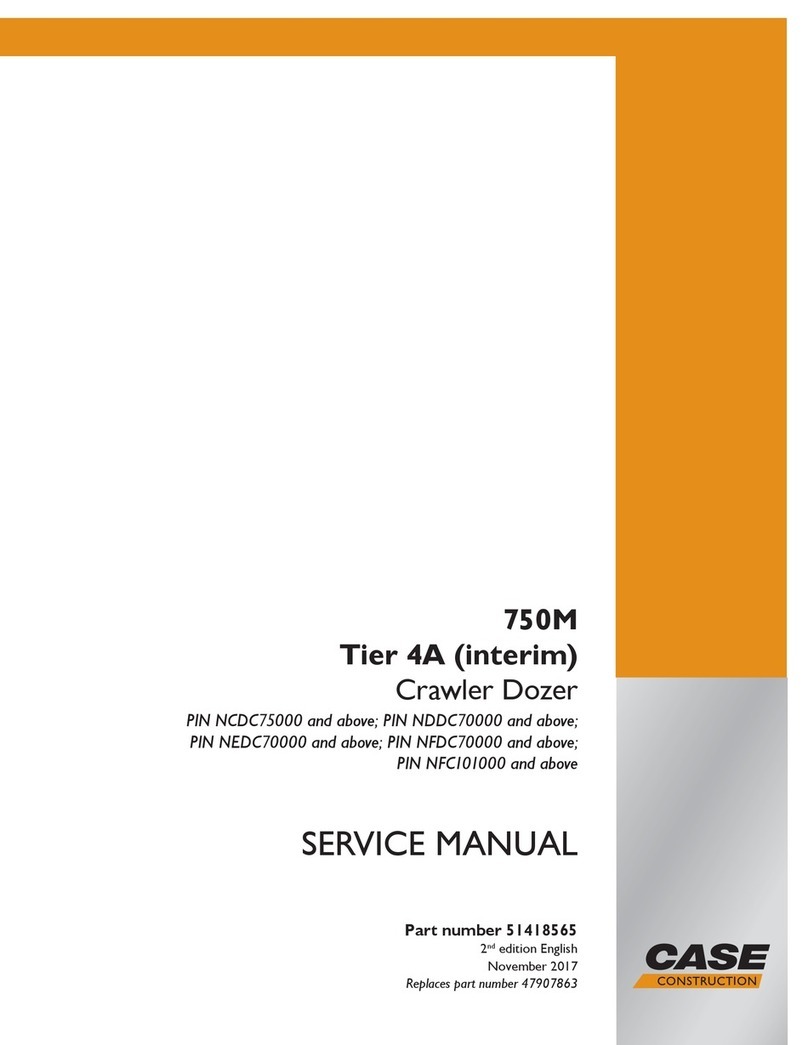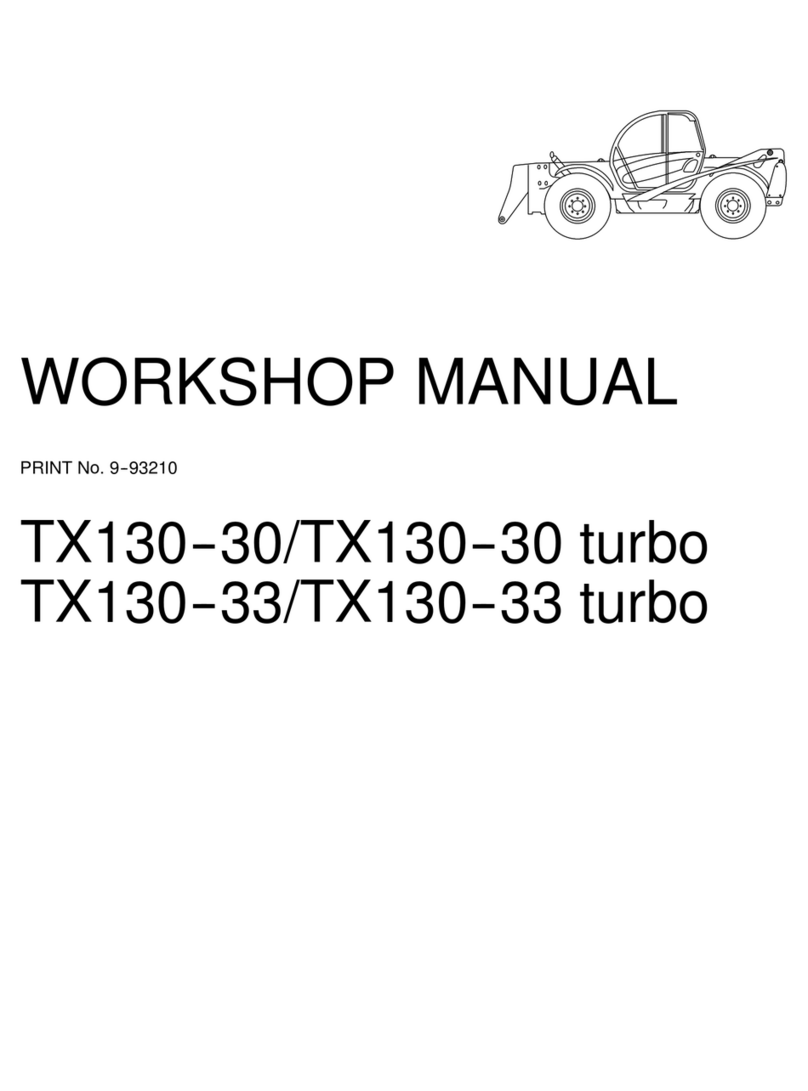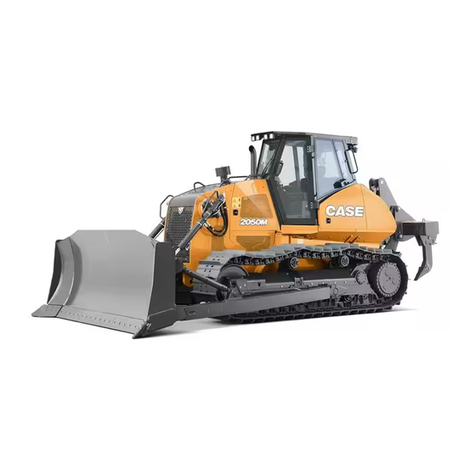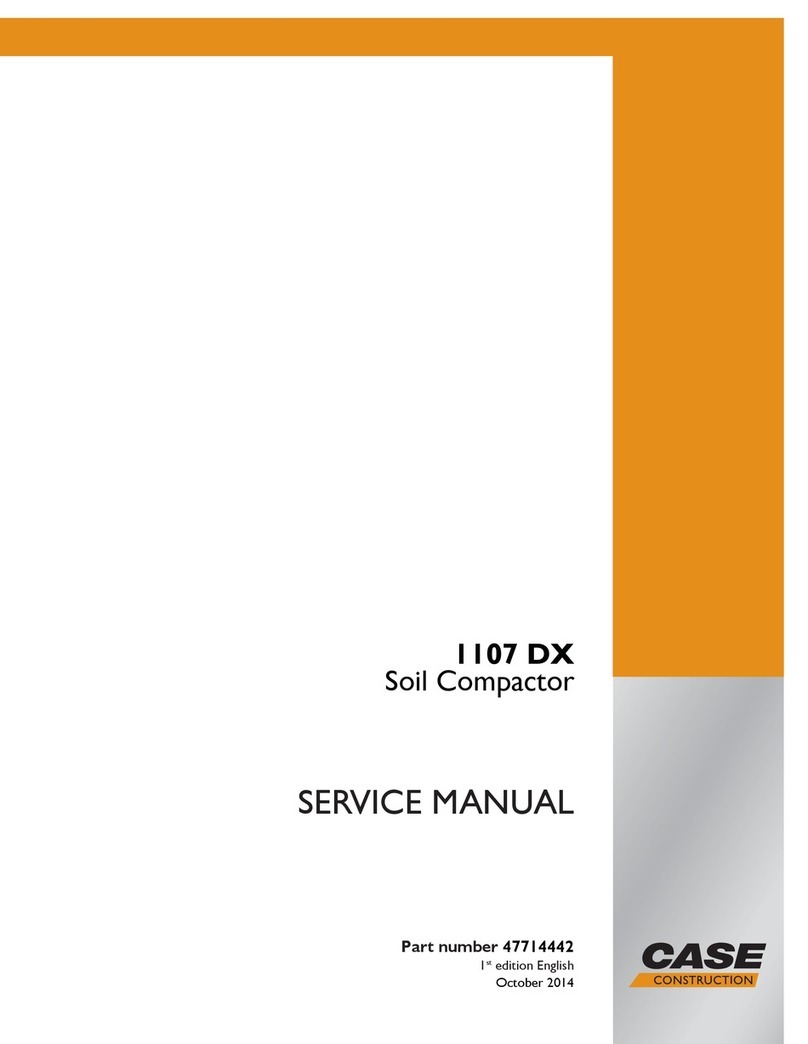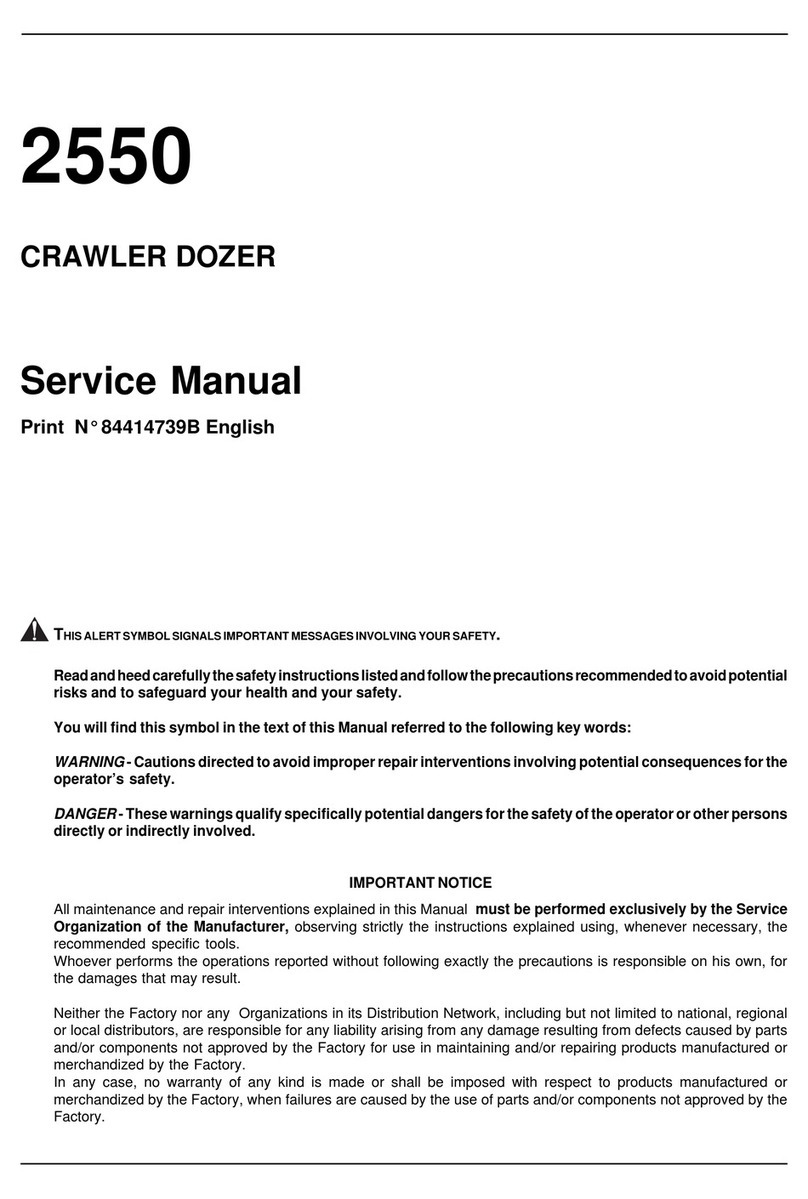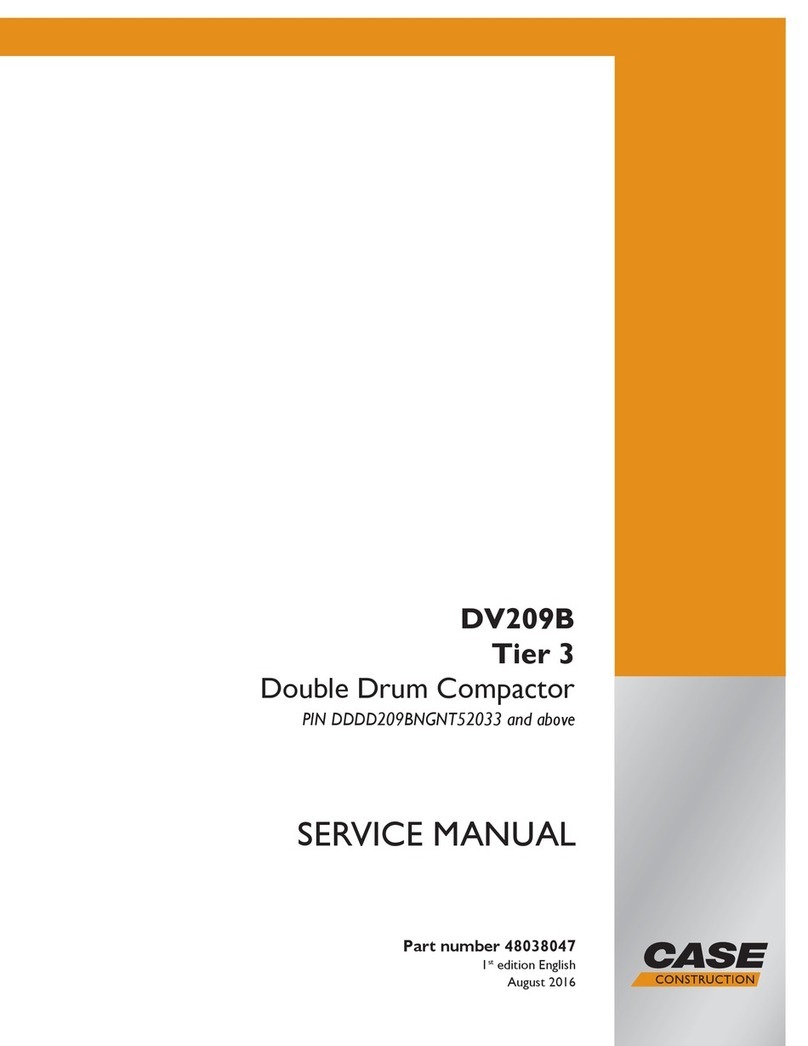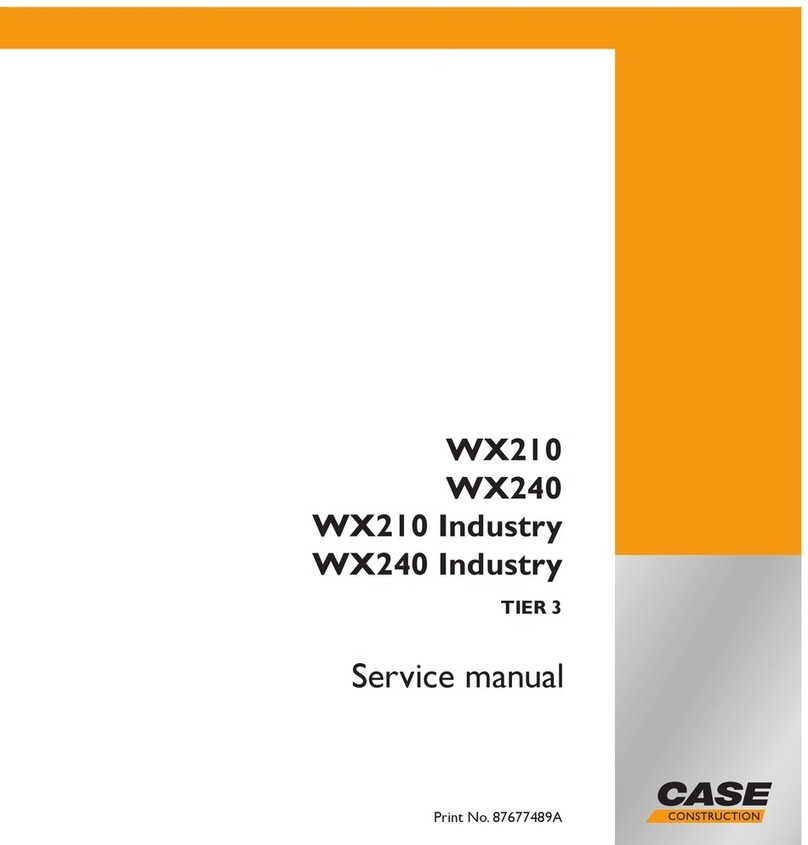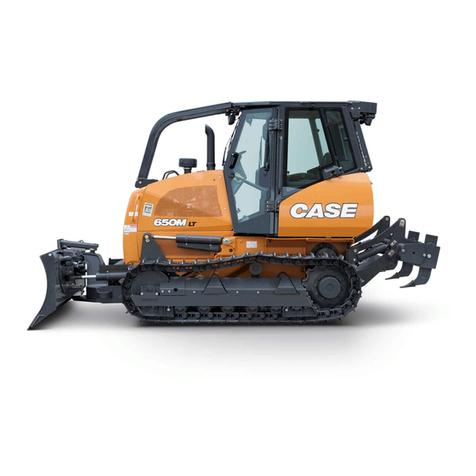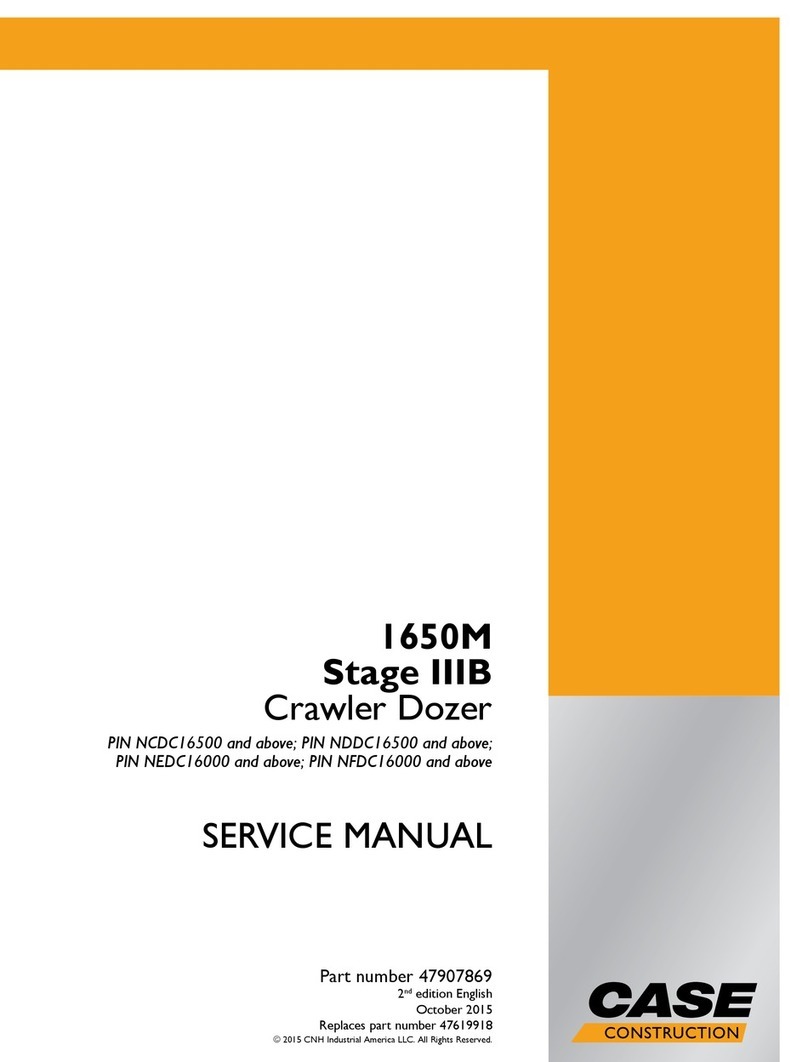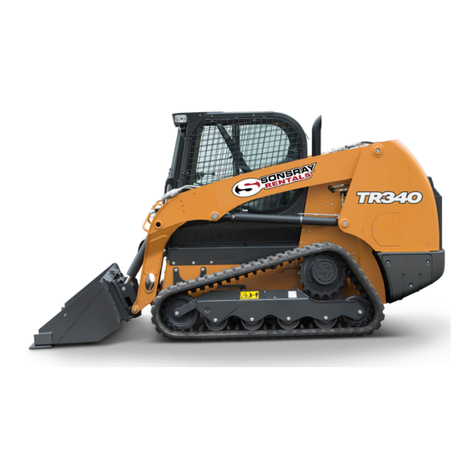
IV
SAFETY RULES
Keep operator's compartment, stepping points, grab-rails
and handles clear of foreign objects, oil, grease, mud or
snow accumulation to minimise the danger of slipping or
stumbling. Clean mud or grease from shoes before
attempting to mount or operate the machine.
Keep shoes free of mud or grease before climbing or
driving the machine.
Never attempt to operate the machine or its tools from any
position other than seated in the operator's seat.
When maintenance operations require moving
hydraulically operated attachments by means of
machine's hydraulic system remember that all
manoeuvres must be made only when seated in the
operator's seat. Before starting machine or moving
attachmentor tools,setbrakes ,sound hornandcall foran
all clear. Raise attachment slowly.
Always block booms or parts of the machine which must
be raised to perform interventions under them with
external devices. Do not allow persons to move into the
vicinitiesnorstanding underequipmentnot beingblocked.
Unlessyouaretotallysureaboutyoursafety,avoidstaying
under raised equipment, even in case it is blocked.
Do not place the body, limbs or fingers into sharp
articulation uncontrolled openings of the machine and
without proper protections, unless they are blocked in a
safe manner.
Never perform interventions with engine running, except
as called for in a Manual. Do not wear loose clothing or
jewellery near moving parts.
When servicing or maintenance require access to areas
that cannot be reached from the ground, use a ladder or
step platform that meet local and national regulations, to
reach the service point. If such ladder or platform are not
available, use the machine hand holds and steps as
provided. Perform all service or maintenance carefully.
Shop and/or field service platforms or ladders must be
constructed and maintained in accordance with local and
national regulations.
Disconnect batteries and tag all controls according to
current regulations to warn that work is in progress. Block
machine and all attachments that must be raised
according to current regulations.
Duetothe presenceofflammable fluids,nevercheck orfill
fuel tanks, batteries, nor use starting fluid near lighted
smoking materials or open flames.
BRAKES ARE INOPERATIVE when manually released
for servicing. Provisions must be made to maintain control
of the machine by blocking or other means.
The fuel filling nose must be kept constantly inside the
fillingneck.Keepthiscontactfromthebeginningtotheend
of the fuelling operation to avoid the possibility that sparks
due to static electricity are generated.
Use only designated towing or attaching points. Use care
in making attachments. Make sure pins and/or locks are
secure before pulling. Stay clear of drawbars, cables or
chains under load.
To move a disabled machine, use a trailer or a low-boy, if
available. In case towing is needed , use all necessary
signals required by local and national regulations, and
follow the directions provided in this Manual.
Toload/unload amachinefromtransporter,choose alevel
surface ensuring firm support to the wheels of truck or
trailer. Use strong access ramps, with adequate height
and angle. Keep surface free of mud, oil or slippery
materials.
Anchor the machine securely to the bed of truck or trailer
and block wheels or tracks with appropriate wedges.
Never align holes with fingers or hands; always use
appropriate aligning tools.
Eliminate all sharp edges and burrs from re-worked parts.
Use only approved grounded auxiliary power sources for
heaters, chargers, pumps and similar equipment to
reduce the hazards of electrical shocks.
Lift and handle heavy parts with a lifting device of proper
capacity.Besure partsare supportedbyproper slingsand
hooks. Use lifting eyes if provided. Watch-out for people in
the vicinity.
Never pour gasoline or diesel fuel into open, wide and low
containers. Never use gasoline, solvent or other
flammable fluid to clean parts. Use exclusively qualified,
non-flammable, non-toxic commercial solvents.
When using compressed air for cleaning parts, use safety
glasses with side shields or goggles. Limit pressure to 2
bar, in accordance with local and national regulations.
Do not run the engine in closed areas without proper
ventilation to remove deadly exhaust fumes.
Do not smoke or permit any open flames or spark near
when re-fuelling or handling flammable materials.
Donot usean openflame asa lightsourcetolookforleaks
or for inspection anywhere on the machine.
Makesurethat allmechanic'stools are ingoodconditions.
NEVER USE tools with mushroomed heads or frayed.
Always wear eye protections.
Movewith extremecarewhenworkingunder themachine,
its attachments and or on or near them. Always wear
protective safety equipment as required, such as hard hat,
goggles, safety shoes, ear plugs.
When performing operations requiring running of the
engine, have a qualified operator in the operator's seat at
all times with the mechanic on sight. Place the
transmission in neutral and set the brakes and safety lock.
KEEP HANDS AND CLOTHING AWAY FROM MOVING
PARTS.
For field service, move machine to level ground, if
possible, and block it. If work on an incline is absolutely
necessary, first block machine and its attachments
securely,thanmove it to levelgroundassoon as possible.
Do not trust worn and /or kinked chains and cables: do not
use them for lifting or pulling operations. To handle them,
always use heavy gloves.
